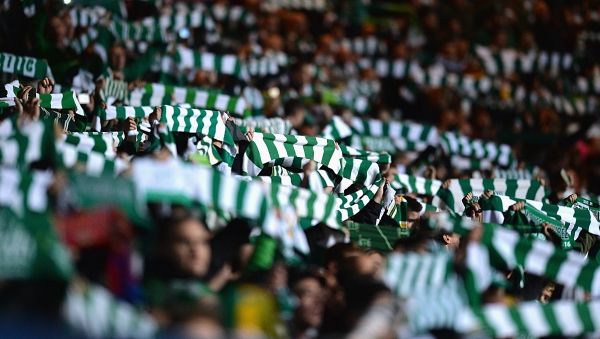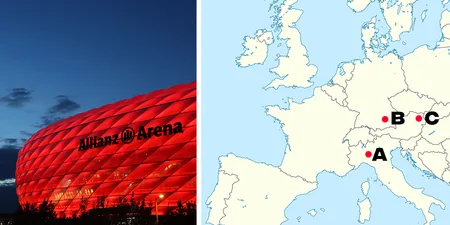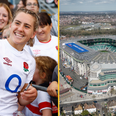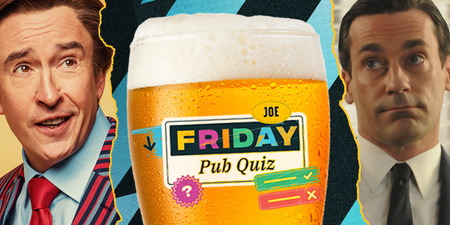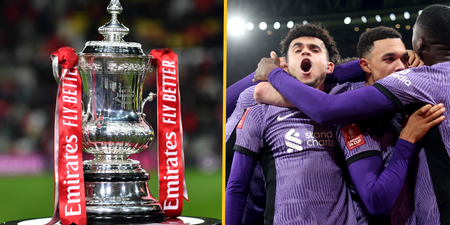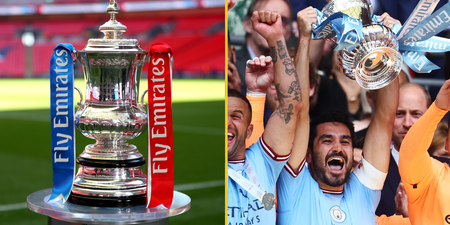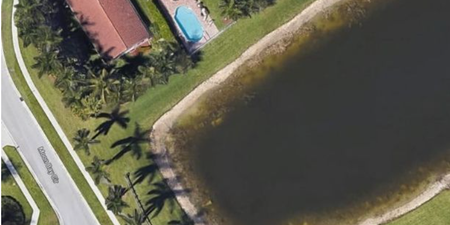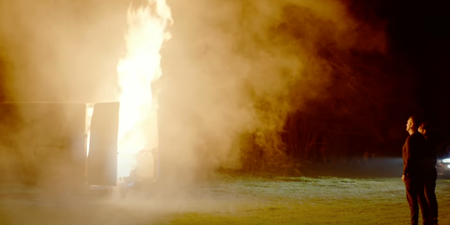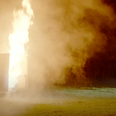It was quarter to three when the drumming began, five to five when it finally stopped.
In between a fixture made mundane by its sheer one-sidedness was played out amidst an atmosphere that seemed out of place; an uncompetitive game afforded the kind of soundtrack that, increasingly at English grounds at least, is reserved only for those matches that matter most.
Chant followed chant, song followed song; this was not spectating, it was supporting in all that that is supposed to mean.
Let's see what this safe standing is like. pic.twitter.com/v2bnuQXCvA
— Tony Barrett (@TonyBarrett) February 25, 2017
When the final whistle was blown, Brendan Rodgers strode onto the pitch to offer his thanks to the Celtic fans, showing particular gratitude to those who had been most responsible for inspiring his players on a day when they might otherwise have gone through the motions in the knowledge that the destination of the Scottish Premier League title is already a foregone conclusion.
Housed in the lower section of the North Stand, the supporters who had provided constant backing had stood up throughout and, as Rodgers’s acknowledgement underlined, they had helped to make a difference.
This is how those who continue to campaign for safe standing to be introduced at Premier League grounds have long envisaged it.
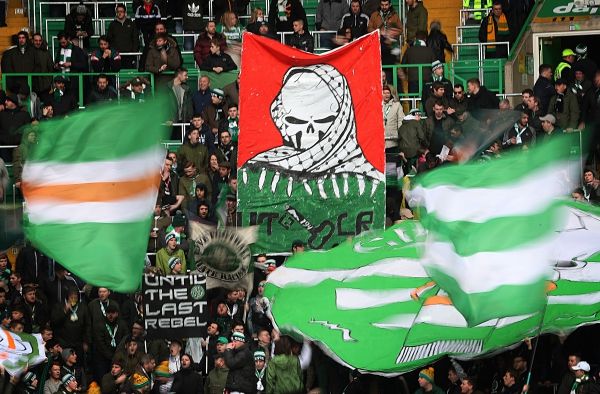
“You don’t want loudspeakers to be used to make the noise in a ground, you want it to be the fans and this is a significant investment in that,” Jon Darch of the Safe Standing Roadshow said when the 2,975 capacity section was opened last summer.
That vision has undeniably been realised at Celtic’s home games since then with the improvement in atmosphere attracting interest from several English clubs, including Manchester United, Tottenham Hotspur and Chelsea, who are looking into ways of allowing their supporters to be more vocal.
That pursuit, though, is not straightforward.
While increased noise levels are desirable – both to enhance “the matchday experience” as club marketing people inevitably put it and to allow their teams to enjoy more vociferous support – there is no desire for safety to be compromised in any way, hence the reason why safe standing remains a talking point in Premier League circles but not yet anything more.
As should be the case given the gravity of its events and implications, the Hillsborough disaster remains fundamental to that ongoing debate.
The idea that standing can ever be safe is, wholly understandably, anathema to the Hillsborough Family Support Group (HFSG) which represents families of 77 of the 96 victims of the 1989 tragedy. As recently as October, Margaret Aspinall, whose 18-year-old son James was killed at the home of Sheffield Wednesday, stated that the group “will always oppose the return of any form of standing.”
To those in the HFSG, the prevalent fear is that any kind of concession on this front could be the start of a slippery slope which leads to supporters being put at risk just as they were in the years leading up to Hillsborough.
“I never want to go backwards,” Mrs Aspinall told JOE.co.uk four months ago.
“I never want to think that my grandchildren could one day end up standing at a football match. I want families to be able to be as certain as they possibly can be that their loved ones will be as safe as they possibly can be and that they will return home once the match has finished. There is nothing to be gained by turning back the clock to a time when this was not the case.”
Against that argument is the view put forward by the likes of Celtic chief executive Peter Lawwell who believes that the introduction of a rail seating section actually “represents an investment in spectator safety” at his own club.
“Across football globally, the reality is that supporters are choosing to stand at matches,” he added. “This is something we must accept and manage and also understand the positive effect which these areas have on atmosphere at matches.”
Hillsborough campaigner Margaret Aspinall tells us why we shouldn't entertain the idea of safe standing https://t.co/bXX2LpMjDU
— FootballJOE (@FootballJOE) October 12, 2016
It is the kind of debate which it is easy to see both sides of. On the one hand, you have the fact that it is no longer 1989 and there is no question that advances in technology and improvements in the attitude of clubs to supporter safety have contributed to lowering the risk of attending football matches.
But on the other, you have those who were bereaved because one particular terrace and those charged with policing it were not up to standard and also the findings of Lord Justice Taylor who concluded that many of the football grounds in England were death traps before proposing the introduction of all-seater stadia.
That recommendation subsequently became a stipulation that all clubs in the top two divisions in English football have had to adhere to since August 1994.
As part of our debate on safe standing, here's a history of terracing in English football https://t.co/2XOTipZaHq
— FootballJOE (@FootballJOE) October 12, 2016
Contrary to popular belief, though, this did not lead to standing being illegal at those grounds. The law demands only that clubs must provide seats for all supporters. But standing is contrary to ground regulations with “persistent standing” being “strictly forbidden” as per the Football League’s model rules.
With Scottish clubs not being bound by the all-seater requirements of the 1989 Football Spectators Act, and the Scottish Professional Football League dropping its opposition to standing in 2011, Celtic sought and obtained permission from Glasgow City Council to introduce a safe standing area, meaning the opportunity exists for the concept to be put to the test at one of Britain’s biggest and best-supported clubs.
That it has, thus far, been a resounding success has added further fuel to the debate with 13 Premier League clubs indicating an interest in safe standing, although the government remains “unconvinced” by the case for it being introduced in England and Wales.
Barry Devonside, whose son was killed at Hillsborough, says arguments in favour of safe standing must be considered: https://t.co/gBX2Wq8xkd
— Tony Barrett (@TonyBarrett) October 12, 2016
But what the Celtic experiment has done is provide an opportunity for the undecided, of which I was one, and even those who are opposed to the idea to see how safe standing works in practice.
On Saturday, I did just that at Celtic’s home game against Hamilton in an attempt to try and make my own mind up based on my own experiences.
Previously, I had not been against safe standing but I had doubted whether or not it was something that as a parent I would want my own children to experience, so I took my six-year-old son with me to see what he made of it all.
All it took was a couple of hours for both of us to be convinced.
It's a long time since I've been to a game and seen fans enjoy themselves like this for 90 minutes. pic.twitter.com/eQpcgG6pt1
— Tony Barrett (@TonyBarrett) February 28, 2017
It wasn’t just the atmosphere, which was considerably better than most of us have become accustomed to at Premier League grounds in England, it was the sense that this is a safe way to enjoy watching football. Each individual ticket is barcoded which means only those in possession of them can gain access to the designated area but in order to add an extra layer of security Celtic have designated stewards who check all tickets at the bottom of access staircases to ensure no-one is able to go where they shouldn’t be.
That control on capacity is as crucial as it is reassuring but it is far from being the only control. Once inside the area, each supporter has a numbered “seat” as specified on their ticket, just as they would if visiting an all-seater stadium or the theatre. That is where you stand or, in the unlikely event that you might prefer not to, you can release the rail seat behind you and sit down.
This was nothing like the terraces that I had stood on in the years prior to all-seater stadia being introduced, particularly as instead of barriers spaced yards apart that created the possibility of supporters being moved about against their will there is, instead, a rail in front of each individual supporter which prevents that from happening.
With the potential for dangerous surges removed, you are able to watch the match confident that your safety is not at risk and may even be enhanced compared with all-seater stands. Gone is the risk of toppling forwards or backwards over a seat when a goal is scored and there is also increased ease of access as there is more space for supporters to enter and exit their designated row.
On top of that, you are free to jump around to your heart’s content in the knowledge that whoever is behind you is almost certainly a like-minded individual who is either doing the same or at the very least will not complain that you are blocking their view.
In those respects and many more, the introduction of rail seats has been a resounding success at Celtic but while safety must be paramount, the impact that it has had on fan culture should also provide food for thought.
Should safe standing return to English football stadiums? Here are answers to the most pressing questions https://t.co/5ySRrZAHFn
— FootballJOE (@FootballJOE) October 12, 2016
To be in a stadium where supporters are able to express themselves, to sing song after song, to dance, to bang drums and to take their lead from two fans with megaphones at the front of the stand is particularly eye-opening when contrasted with the sanitized experiences that we have become used to at the grounds belonging to some of England’s biggest clubs.
But that isn’t to say that the Celtic example would automatically be repeated just by following their example with regards to rail seats. On Saturday, it cost just £26 to watch Scotland’s best team play from a vantage point in the North Stand lower.
That kind of pricing structure is in keeping with one of Lord Justice Taylor’s other recommendations that has been conveniently overlooked for too long, a call for clubs to ensure that supporters did not carry the financial burden for enforced changes to their matchday routine.
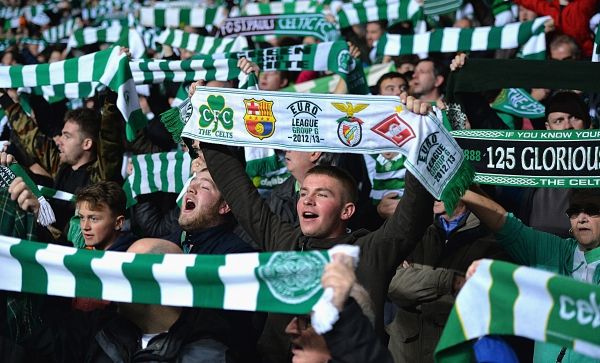
By attempting to keep prices reasonable, Celtic have not only created an area where fans can stand safely, they have made it accessible to people of all ages and most backgrounds. In doing so, they have allowed their own fan culture to thrive at a time when that of others continues to wither. As long as that remains the case, demands for fans of English clubs to be given the same opportunity to stand that their counterparts at Celtic enjoy, in the truest sense of the word, will only intensify.
